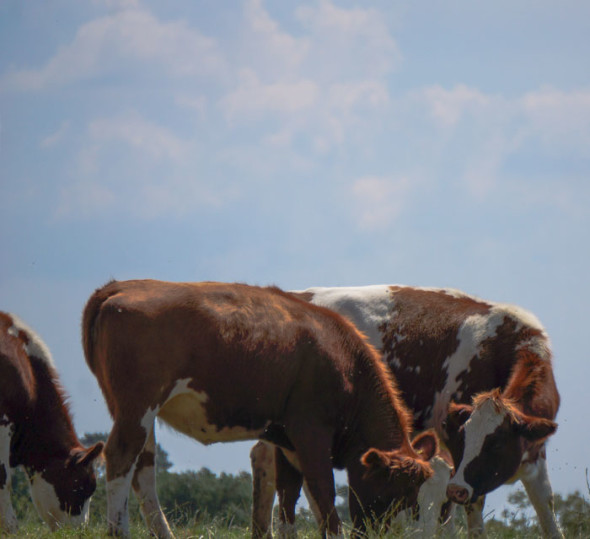 When I found out that it’s estimated one in five British cows never see daylight, I took my children to watch dairy cows being milked. That is, dairy cows who DO see the light of day. Who graze outdoors during the grazing season. Who mingle together in fields and eat grass outdoors when the sun shines.
When I found out that it’s estimated one in five British cows never see daylight, I took my children to watch dairy cows being milked. That is, dairy cows who DO see the light of day. Who graze outdoors during the grazing season. Who mingle together in fields and eat grass outdoors when the sun shines.
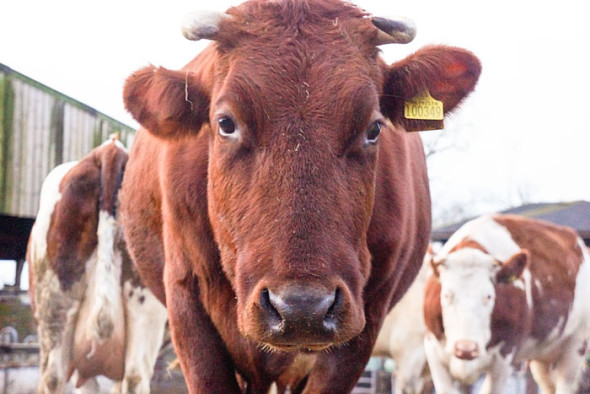 I was shocked to learn in an editorial in the January 10th, 2015 edition of The Times that some cows are kept permanently indoors: “Think before you drink. That cow might never have experienced fresh air.” If there’s approximately 1.78 million dairy cows in Britain, that means over 350,000 never see daylight.
I was shocked to learn in an editorial in the January 10th, 2015 edition of The Times that some cows are kept permanently indoors: “Think before you drink. That cow might never have experienced fresh air.” If there’s approximately 1.78 million dairy cows in Britain, that means over 350,000 never see daylight.
So you know those ads with happy cows in fields? Don’t always believe them!
The billionaire Duke of Westminster opened in December 2014 another super large dairy unit which has – wait for it – “zero-grazing.” Up to 800 dairy cows stay indoors all year round at this super-mechanised farm. They supply Tesco by the way. Waitrose and Marks & Spencers only have milk suppliers that allow their dairy cows to graze outside during the grazing season. The Guardian has written about the battle for the soul of British Milk putting forward the opinions of both sides.
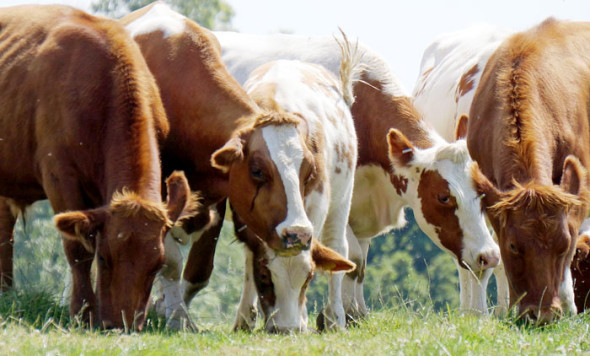 All summer and early autumn we passed cows happily grazing in a nearby field. Cows who enjoy daylight are put out to graze in the spring and then return to barns in the winter. Cows are very sociable animals too. They’re known to form strong social bonds in their herds – especially smaller herds.
All summer and early autumn we passed cows happily grazing in a nearby field. Cows who enjoy daylight are put out to graze in the spring and then return to barns in the winter. Cows are very sociable animals too. They’re known to form strong social bonds in their herds – especially smaller herds.
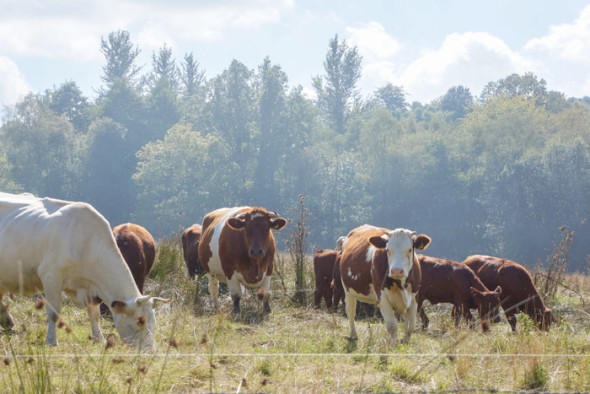 We also watched a mixed herd of cows munching away at the grass in a field at biodynamic Plawhatch Farm. I wrote before how they plant and farm according to the moon.
We also watched a mixed herd of cows munching away at the grass in a field at biodynamic Plawhatch Farm. I wrote before how they plant and farm according to the moon.
We went back to Plawhatch Farm last week to watch the cows being milked.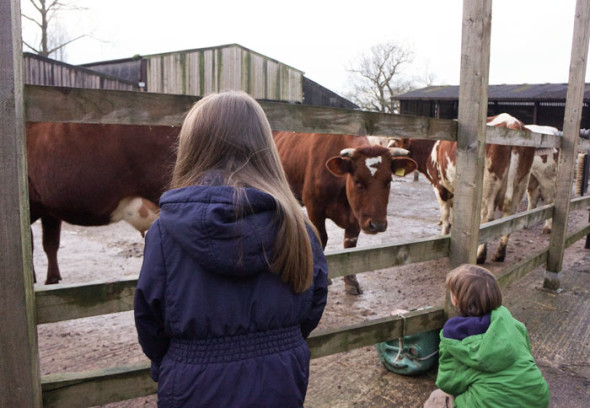
As the cows waited outside for their milking session to begin – their udders very full – a ten week old girl calf was kept with them. She also wanted to have a closer look at Luce and Theo. Dairy cows in small herds like this, which see the daylight, graze in green pastures, often live into their teens and even 20s. Otherwise they live to around 4, 5 or 6 years old then are considered ‘spent’ in terms of milking and are slaughtered.
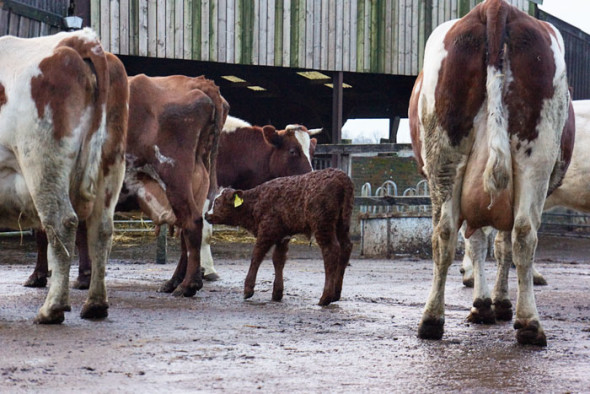
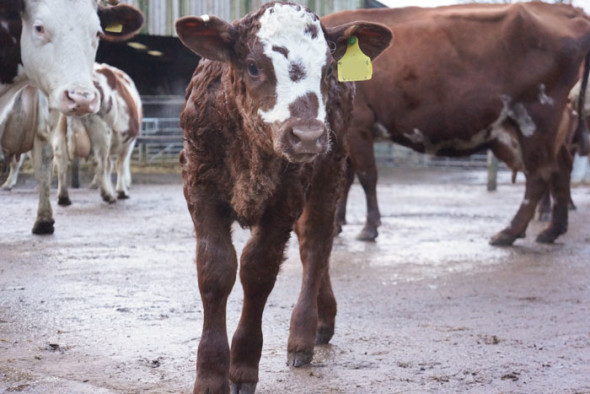
These dairy cows are milked twice a day – around 4.30 am and 4.30 pm. Naturally we went to the latter session!
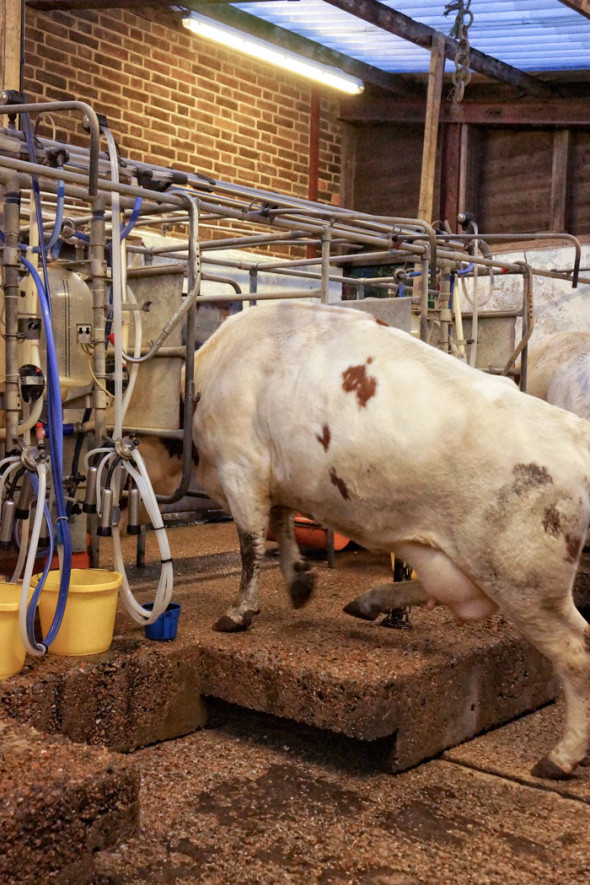
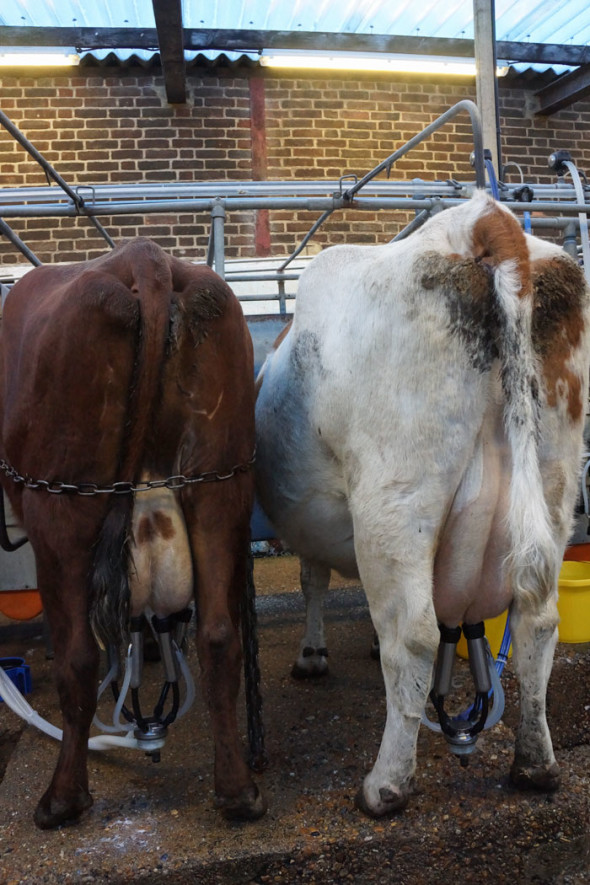
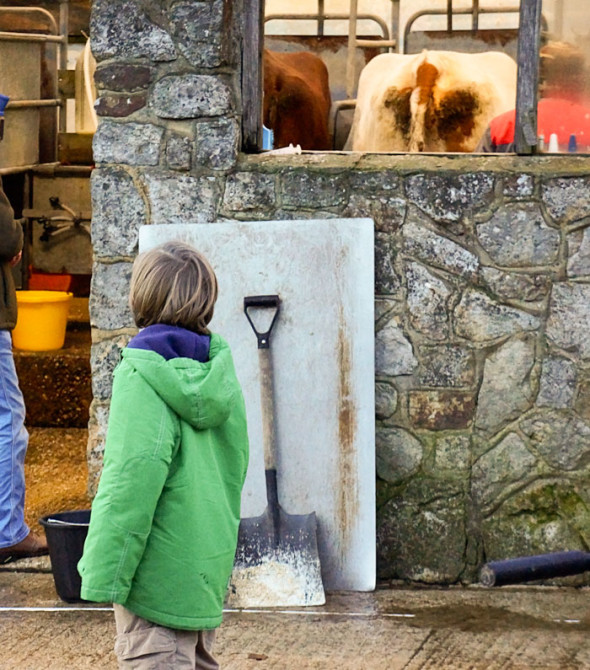
As we left the milking shed at dusk, Luce and Theo turned to me and said, Why do some farms not allow their cows outside? Do they really never see daylight? Because they want lots of cheap milk, I answered. And I agree with The Times editorial that milk cartons could state: “This milk may come from cows kept permanently indoors.”
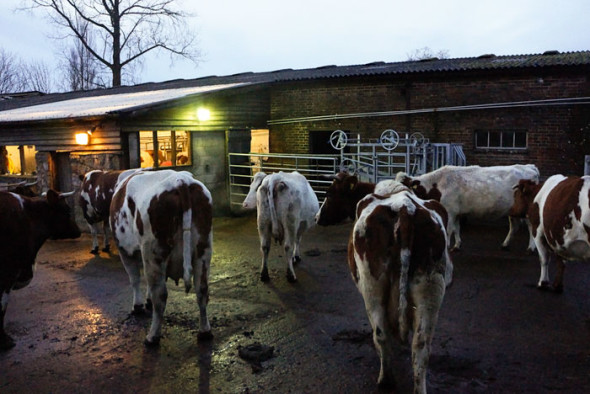
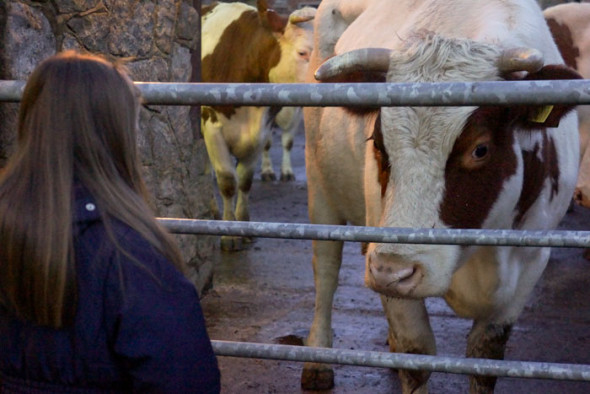
I don’t want my children to drink cheap milk if it means that we have “battery cows” who live permanently indoors. I’m hoping that by watching cows grazing naturally and seeing them up close, my two kids will be part of a future generation that ensures dairy cows really do enjoy daylight and munch on grass – to quote from the hymn Jerusalem – “In England’s green and pleasant land.” What about you? And would you prefer our milk cartons labeled?

Pingback: Country Kids from Coombe Mill | Coombe Mill
It is quite alarming that some cows are permanently inside, no animal deserves to be kept in. I love the pictures of the cows out side in the fields x #AnimalTales
Grace & Lucas say – We never knew about these poor cows. We don’t want to drink milk where cows haven’t been outside to play – that’s really mean. We totally agree with you on this x #animaltales
I’d never even thought about cows never seeing daylight until I read the article in The Times. It’s made me think about where I buy milk from though and yes, I’d definitely prefer the cartons to be labelled stating how the animals are kept just as they do on egg boxes.
Great photos as always Kriss. It’s so important to educate our children about where their food comes from.
Wow, I had never really given this much thought because our Australian cows are all free range (it would cost more to house them here). I knew that cows bread for meat supply were often kept indoors overseas but it hadn’t occurred to me that milkers also endured this plight. I think an awful lot of that cheap milk would also be found in biscuits and other prepared foods. Thanks for the insight.
I had no idea, and I’m a vegetarian and thought I was pretty aware of stuff like this 🙁 Thank you for sharing x
Pingback: Dairy cows who see daylight (unlike too many)
The dairy farming industry in the UK is in such a mess. This is why I will only buy free range eggs.
I grew up on a farm in Cornwall that had cows – I used to go and sing to them regularly!
I’ve read and heard that cows love music and often gather closer if they hear music playing. Love that you sang to your dairy cows!
Those are shocking figures. I always buy organic milk (in France) which I assume and hope means the cows are outside eating grass…but who knows. This situation needs to be brought to light, to a wider public. I’ll share your post around as much as I can. #animaltales
I know some of the organic milk companies here – like Yeo Valley definitely take care of their cows and let them outdoors to graze ( https://www.yeovalley.co.uk/the-valley/our-family-farming/our-cows ) Thank you Phoebe for spreading the word.
The problem is, some people might think that the cows are actually happier indoors, especially in winter. Many cows are housed indoors in the worst weather but go out for the rest of the year. We definitely need to be educating people about exactly what is involved in the supply of their cheap milk (or any other product for that matter).
And thank you for linking in with #AnimalTales (you hadn’t linked when I first commented!) If only more people were aware of where their milk came from and how wrong it is to keep cattle housed inside all their lives just so we can have cheap milk. The ad people have a lot to answer for.
I so agree Rosie. Milk shouldn’t be cheaper than bottled water.
I buy a lot of our milk from our neighbouring farmer who keeps his cows are out in the fields most of the year (a few come in during really bad weather). My boys are lucky enough to know exactly where their milk comes from.
I do think it’s important for children to be aware about where the milk comes from and how the animals are treated.
Thank you for opening my eyes to this.
Thank you – I had no idea until I read about it.
I post everyone should read, I totally agree with labelling on cheap milk from cows who never see the outdoors. I wonder if we could start a petition? I am certainly featuring this post next week, and sharing widely, thanks for bringing it to Country Kids.
Thank you Fiona. I really wasn’t aware until I read the Times opinion page. I assumed that cows had outdoors grazing time. I really hope that Britain doesn’t take the US super huge and super mechanised farm route. I agree we should shout this out – thank you again.
I have NEVER thought about this! Battery cows…. how sad! A friend of mine is a milker down in Somerset and he is practically in Love with his cows and knows each of them by name, he even has his favourites! I’ll definitely be looking out for ‘free-range’ milk now! Loved the pics – how cute is that little calf?? Kerry x
I love reading about how small dairy farmers know their cows and see distinct personalities – good on your friend! Sadly cartons don’t have to say free range yet.